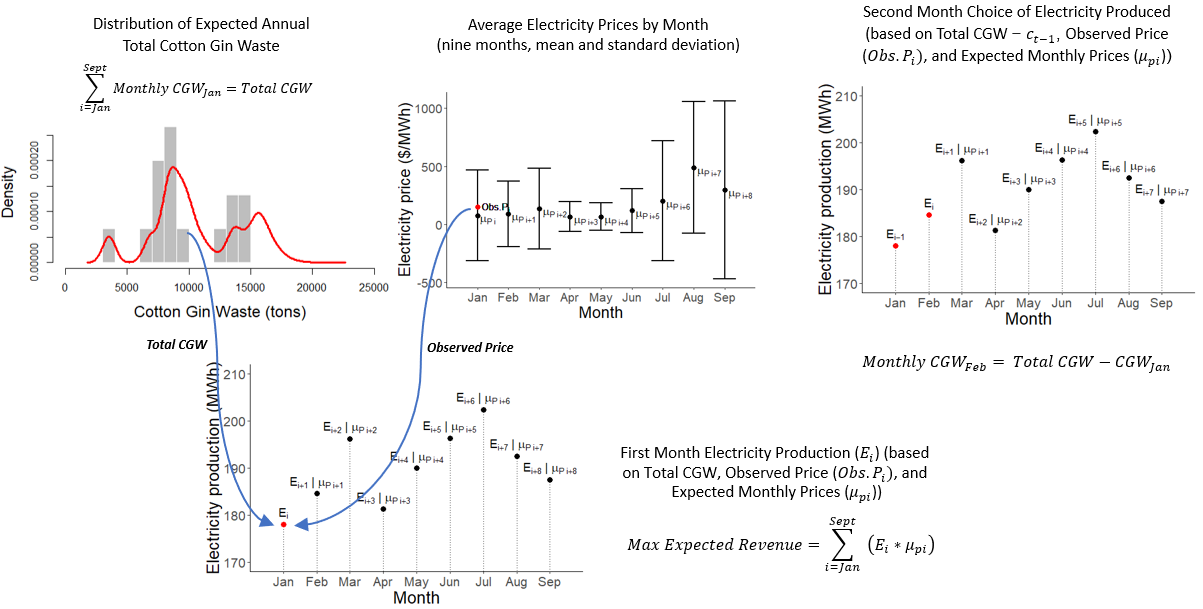Profitability of a two-product biorefinery
Abstract
Using the example of cotton gin waste (CGW), this work argues that onsite power production at food and fiber processing facilities can be very profitable - adding needed revenues to rural processing plants and producer cooperatives. The investment presents a stable, environmentally sound alternative to policies that seek to increase bioenergy by way of large facilities dependent on dedicated crops.
As a simple check on one such emerging system, we examine the reductions in processing costs (or higher prices) needed for such a supplemental product that uses electrolysis, ammonia, to operate profitably alongside the modeled power plants. Using hourly electricity prices, monthly ammonia prices and annual gin trash data, we simulate distributions across a nine-month season and calculate annual, and cumulative profit and return on investment over a 12-year period. Our model is flexible and allows for month-to-month operational decision-making. Annual profits range from $0.26M-$0.37M for a small gin and $0.42M-$1.23M for a medium gin. The models remain profitable after sensitivity analyses that systematically lower electricity prices and conversion efficiency and add fixed costs.
